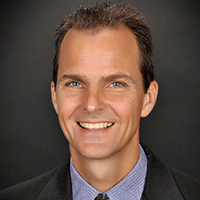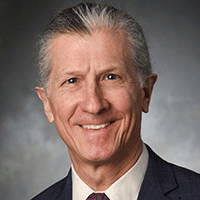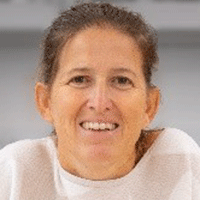
Monday, September 8, 2025
8:00am - 9:00am
Dr. Steven Griffin
Boeing Chief Engineer at Maui Space Surveillance System
Maui, HI
Keynote Title: Smart Structure Technology Push -vs- Pull
Abstract: Smart structures are often pushed as an alternative to a working solution to an engineering problem based on increased efficiency or performance. This is often a hard sell because the risk associated with a new approach may not outweigh the benefit. A much more compelling case is where a smart structure appears to be the only way of meeting a requirement. Some of these cases will be discussed and an explanation given of why smart structures were the clear technology winner in these applications.
Biography: Steven Griffin is a Boeing Senior Technical Fellow of structural dynamics and vibration. Dr. Griffin also served as chief engineer at the Maui Space Surveillance System until May 2025. As Senior Technical Fellow, Dr. Griffin provides enterprise-wide expertise on a range of technical areas including optical/structural LOS modeling for surveillance and directed energy systems, integrated structural acoustic modeling, vibration management, smart structures, optical space structures, composite structures, and structural health monitoring. Prior to joining Boeing in 2000, Dr. Griffin served with the U.S. Air Force Research Laboratory, as a civilian, military officer and program manager charged with spacecraft related composite structural research and structural/optical/acoustics research programs. He earned a doctorate and a master’s degree in aerospace engineering from the Georgia Institute of Technology. He earned a bachelor’s degree in aerospace engineering and a master's degree in engineering Mechanics from the University of Florida. Steve is a Fellow of AIAA and DEPS.

Tuesday, September 9, 2025
8:00am - 9:00am
George A. Lesieutre
Professor Emeritus of Aerospace Engineering
Penn State University
Keynote Title: Adaptive Structures: Making a Difference Together
Abstract: Adaptive structures systems have evolved tremendously in the last 45 years, enabled by advances in constituent and integrative science and technology. Every significant advance was made by a talented individual who benefitted from collaborations with others offering complementary perspectives. Such interdisciplinary explorations illuminated potential disruptive functionality and exposed issues related to the realization of complicated systems. All aimed at a goal of societal impact: applications and technologies that improve people’s lives while creating businesses and jobs. This talk will address questions like: How does the evolution and growth of a field (e.g. piezo*) depend on individual innovations? What limits growth? What is the role of a technological community (social network) like SMASIS?
Biography: Lesieutre is Professor Emeritus of Aerospace Engineering at Penn State. He earned a B.S. in AeroAstro from MIT and a Ph.D. in Aerospace Engineering from UCLA. His research focuses on structural dynamics of aerospace systems, including passive damping and active structures. He is the author of a graduate-level textbook on structural dynamics. Prior to joining Penn State, he held positions at several companies and a national lab. At Penn State, he previously served as Associate Dean for Research and Graduate Programs, Department Head of Aerospace Engineering, and Director of the Center for Acoustics and Vibration. Lesieutre is a Fellow of the American Institute of Aeronautics and Astronautics and previously served on the AIAA Board of Directors, as General Chair for the 2015 AIAA SciTech Forum, and on several NASEM study panels. He presented the SDM Lecture at SciTech 2014. Lesieutre has received several awards, including five annual best paper awards and the SPIE Lifetime Achievement Award in Smart Structures and Materials. He has advised more than 60 graduate students and published more than 300 technical articles. He once paddled a canoe from Montreal to the Gulf of Mexico as part of a historical reenactment and ran a 50-mile ultramarathon. He is an instrument-rated private pilot.

Wednesday, September 10, 2025
8:00am - 9:00am
Katia Bertoldi
Harvard John A. Paulson School of Engineering and Applied Sciences
Cambridge, MA
Keynote Title: Robotic Mechanical Metamaterials
Abstract: Flexible mechanical metamaterials are a class of structures with unique geometric features engineered to exhibit extraordinary properties in the nonlinear regime. These systems have the potential to drive the next generation of smart materials and devices, enabling functionalities such as shape morphing, programmable nonlinear mechanical behaviors, and energy manipulation.
Recently, a groundbreaking concept has emerged: embedding computational capabilities directly into these metamaterials. The integration of programmable mechanical responses, shape-shifting capabilities, and computation within a single synthetic structure paves the way for a new class of machines that are monolithic, require minimal electronic inputs, and possess advanced functionalities inherently embedded in their architecture.
In this talk, I will present our recent progress on integrating shape morphing, sensing, and intelligence into a single synthetic structure to realize such machines.
Biography: Katia Bertoldi is the William and Ami Kuan Danoff Professor of Applied Mechanics at the Harvard John A. Paulson School of Engineering and Applied Sciences. She earned master degrees from Trento University (Italy) in 2002 and from Chalmers University of Technology (Sweden) in 2003, majoring in Structural Engineering Mechanics. Upon earning a Ph.D. degree in Mechanics of Materials and Structures from Trento University, in 2006, Katia joined as a PostDoc the group of Mary Boyce at MIT. In 2008 she moved to the University of Twente (the Netherlands) where she was an Assistant Professor in the faculty of Engineering Technology. In January 2010 Katia joined the School of Engineering and Applied Sciences at Harvard University and established a group studying the mechanics of materials and structures. She is the recipient of the NSF Career Award 2011 and of the ASME's 2014 Hughes Young Investigator Award. She published over 150 peer-reviewed papers and several patents. View a complete list of publication and research information here.
Dr Bertoldi’s research contributes to the design of materials with a carefully designed meso-structure that leads to novel effective behavior at the macroscale. She investigates both mechanical and acoustic properties of such structured materials, with a particular focus on harnessing instabilities and strong geometric non-linearities to generate new modes of functionality. Since the properties of the designed architected materials are primarily governed by the geometry of the structure (as opposed to constitutive ingredients at the material level), the principles she discovers are universal and can be applied to systems over a wide range of length scales.